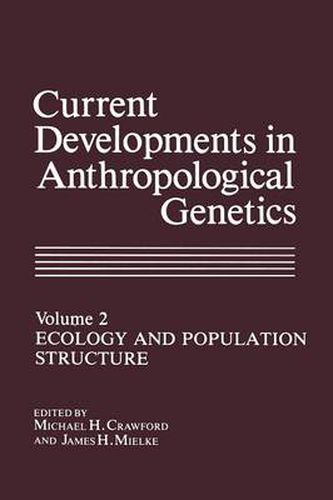Readings Newsletter
Become a Readings Member to make your shopping experience even easier.
Sign in or sign up for free!
You’re not far away from qualifying for FREE standard shipping within Australia
You’ve qualified for FREE standard shipping within Australia
The cart is loading…






This title is printed to order. This book may have been self-published. If so, we cannot guarantee the quality of the content. In the main most books will have gone through the editing process however some may not. We therefore suggest that you be aware of this before ordering this book. If in doubt check either the author or publisher’s details as we are unable to accept any returns unless they are faulty. Please contact us if you have any questions.
This volume examines the interrelationship of ecology, subsistence pat terns, and the observed genetic variation in human populations. Hence, the book is divided conceptually into the following categories: nonhuman primates, hunters and gatherers, nomads, swidden agriculturalists, peas ant farmers, religious isolates, and modern and urban aggregates. While many of these populations have experienced (and are experiencing) ac culturation as a result of contact with technologically more advanced groups, the genetic structures described in this volume attempt to recon struct the traditional patterns as well as genetic changes because of con tact. Most chapters also integrate biological (genetic), social, and de mographic data within an ecological frame thus presenting a holistic view of the population structures of ecologically distinct groups. The first chapter examines the body of early nonhuman primate lit erature that emphasized ecological determinism in effecting the popula tion structure of our primate ancestors-relatives. It also examines more recent literature (since 1970) in which it became apparent that greater flexibility exists in primate social structure within specific environmental frameworks. Thus, it appears that our nonhuman primate evolutionary heritage is not one of ecological determinism in social organization but one of flexibility and rapid change suggesting the evolutionary success of our species is based upon a system of flexibility and that social ad aptations can be accomplished in a number of diverse ways.
$9.00 standard shipping within Australia
FREE standard shipping within Australia for orders over $100.00
Express & International shipping calculated at checkout
This title is printed to order. This book may have been self-published. If so, we cannot guarantee the quality of the content. In the main most books will have gone through the editing process however some may not. We therefore suggest that you be aware of this before ordering this book. If in doubt check either the author or publisher’s details as we are unable to accept any returns unless they are faulty. Please contact us if you have any questions.
This volume examines the interrelationship of ecology, subsistence pat terns, and the observed genetic variation in human populations. Hence, the book is divided conceptually into the following categories: nonhuman primates, hunters and gatherers, nomads, swidden agriculturalists, peas ant farmers, religious isolates, and modern and urban aggregates. While many of these populations have experienced (and are experiencing) ac culturation as a result of contact with technologically more advanced groups, the genetic structures described in this volume attempt to recon struct the traditional patterns as well as genetic changes because of con tact. Most chapters also integrate biological (genetic), social, and de mographic data within an ecological frame thus presenting a holistic view of the population structures of ecologically distinct groups. The first chapter examines the body of early nonhuman primate lit erature that emphasized ecological determinism in effecting the popula tion structure of our primate ancestors-relatives. It also examines more recent literature (since 1970) in which it became apparent that greater flexibility exists in primate social structure within specific environmental frameworks. Thus, it appears that our nonhuman primate evolutionary heritage is not one of ecological determinism in social organization but one of flexibility and rapid change suggesting the evolutionary success of our species is based upon a system of flexibility and that social ad aptations can be accomplished in a number of diverse ways.